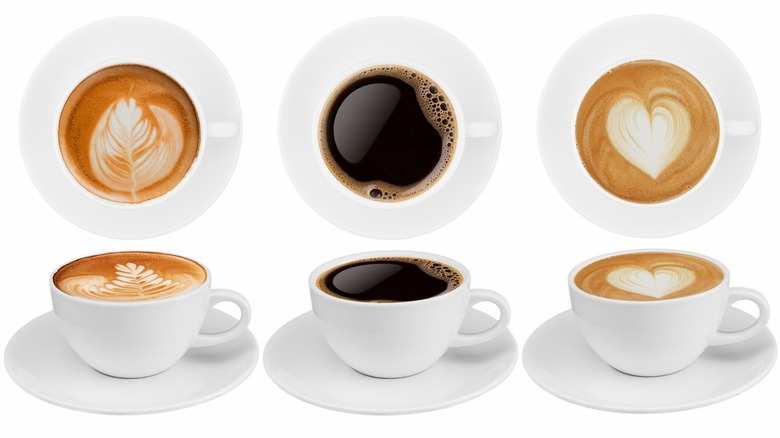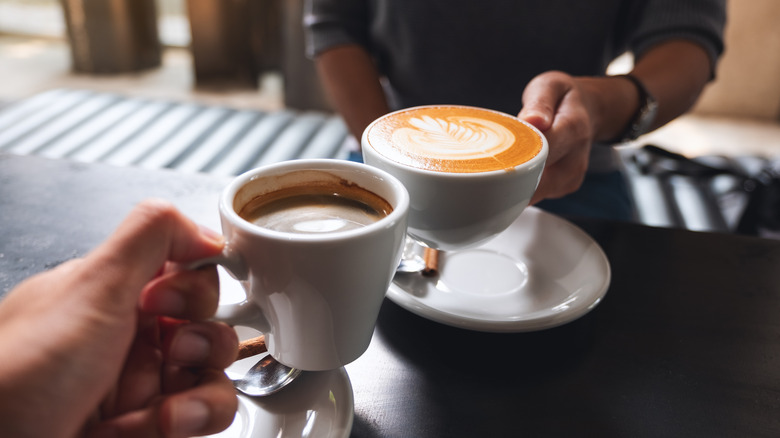The Major Caffeine Difference In A Latte Vs. Regular Coffee
When your eyelids are heavy and your energy is dragging, do you opt for a latte instead of a cup of regular coffee, believing the espresso-based beverage has more caffeine? If so, then you should rethink your decision.
Espresso has a reputation as being a highly caffeinated beverage. Why else would shots of espresso be served in miniature coffee cups in Italian cafes for sipping while brewed coffee is served in much bigger drinking vessels? In truth, espresso is coffee. It's concentrated ground coffee beans typically used as a base for coffee beverages such as lattes, mochas, and cappuccinos, but it's still just coffee.
One shot of espresso generally contains about 29-100 milligrams of caffeine. On the other hand, eight ounces of standard brewed coffee has around 96 milligrams of caffeine. While these numbers may make it seem like you are generally getting just as much caffeine in a latte as a mug of coffee, that usually isn't the case, thanks to the delicious latte add-ins like flavored syrups and milk.
Different concentration of caffeine
If a latte is your afternoon pick-me-up, know it will generally be about 1/3 espresso and 2/3 steamed milk, then topped with foam. As such, that latte will typically have less caffeine per serving than ordering a cup of light roast. If you chose a flavored latte, such as a hazelnut, you're still diluting the concentration of espresso.
But remember, 96 milligrams of caffeine for an 8-ounce cup of coffee compared to 64 milligrams of caffeine for a 1-ounce shot are just estimates. How the coffee beans are processed and brewed will affect the caffeine in the drink. To make a mug of coffee stronger, increase the ratio of ground coffee beans to water; however, you may end up with a more bitter drink. And with a latte, instead of one shot of espresso, make it a double. But note the drink will also taste stronger.
Ultimately, how strong you want your drink to be is up to personal preference and taste.

